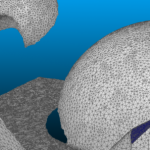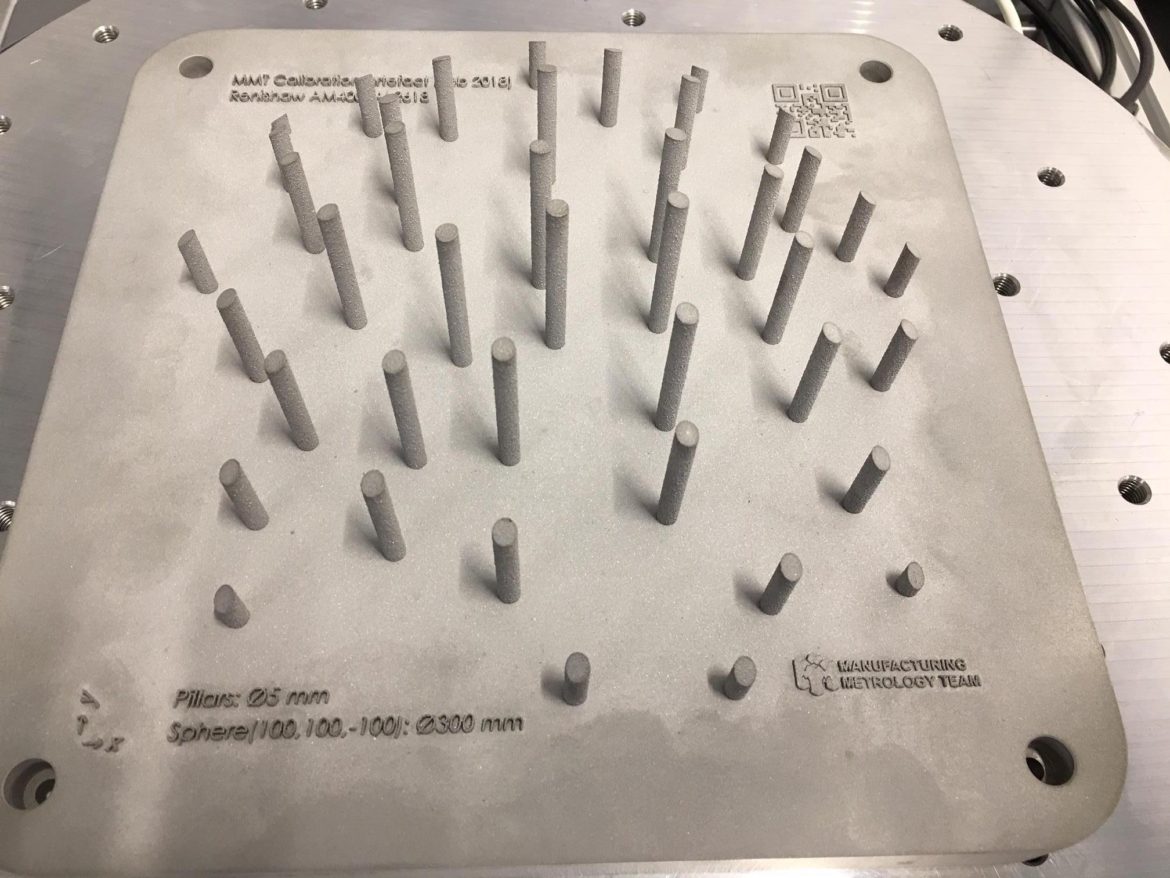• Simple optical scanning technology delivers rapid, automated 3D surface topography measurements
• Measurement area can be specified to match the build plate of specific Laser Powder Bed Fusion (LPBF) printer systems
• High-speed acquisition – 7.5 seconds scan cycle time enables seamless integration of data acquisition with LBPF process
• Designed for additive manufacturing workflow integration; compatible with industry-standard data formats and networking protocols
• Utilises Taraz Information-Rich-Metrology (IRM) software to deliver unmatched scanning cycle time and surface coverage
• Available as a turnkey system, integration component, or licensable reference design
Taraz Metrology’s TXR100 is a fringe projection scanning solution designed to provide in-process surface topography measurements for LBPF additive manufacturing systems. 3D printing of metal components involves high-value raw materials and the inherent risk that, if a layer contains a form error or unwanted artefact (eg weld spatter), then the entire
print run becomes unusable. The TXR100 system provides in-process feedback on each layer’s surface topography, providing early warning of a print failure (triggering the printer control software to abort the build, if process control parameters require it) as well a rich data set characterizing a finished component’s internal structural properties.

The system uses advanced, camera-based optical metrology and is optimized for the inspection of additively manufactured parts, greatly enhancing speed and versatility. Scan data from the TXR family can be used in industry-standard point cloud processing software, either for analysis, quality control, or process development. The TXR100 is a
member of the TXR family which offers options on measurement area, minimum feature size, and scanning speed. The family is also supported with a bespoke design service, allowing the design to be optimized to a specific requirement, or to be fine-tuned to match a specific printer.
Technology
Taraz Metrology’s fringe projection technology consists of two main elements – a high specification digital projector and a number of industrial cameras, each of which are controlled by Taraz IRM Software. Sequential patterns of dark and light fringes are projected onto the component’s surface, and the patterns generated are captured by the system cameras. Taraz IRM Software then models the shape of the component surface from the scan data, which is displayed on-screen in the form of a point cloud. This data can then be exported in a range of widely used file formats for analysis, e.g. comparison to CAD data or topography assessment.
Taraz Metrology has taken the traditional capabilities of fringe projection and delivered significant additional user benefits through the use of IRM and related techniques:
- Surface topography, normally a challenge for fringe projection systems, can be better captured using projector/camera pose optimization
- Measurement cycle time is reduced using high-speed 3D reconstruction algorithms
- Voids within the point cloud are minimized as a result of high-density data acquisition
Applications
Many applications benefit from the TXR100’s capability, including:
| Process Control | The TXR100 system provides a layer-by-layer monitor of build integrity. In the case of an absence or surplus of fused material, or other serious malfunction, a trigger signal can be sent to the printer control software to abort the build, saving time, material and money. |
| Quality Assurance | Critical parameters (eg presence of predefined defects, layer topography, etc) can be captured for each layer of the component build, providing a data source to ensure conformance to the required standard. |
| Printer Test & Calibration | A test build routine (eg to produce a standard artefact) can be employed prior to the start of a print run, allowing validation of both the printer and raw material. Individual layer data sets can also be generated from the printing a standard test artefact – this data can be used in combination with post-process form measurements (available using the Taraz TZF system family) to fully calibrate the printer system performance. |
| Research & Development | In addition to production applications, the TXR100 system is ideally suited for use as a process/material characterization tool for research and development purposes. |
| Material Characterisation | Surface topography data can be used to check the conformance of raw powder material, as well as to characterize the process attributes of a given set of material specifications and printer settings. |
User Interfaces
The TXR family is intended for use alongside high-capacity printing systems in the industrial environment. IRM software features a user interface designed for the printer operator; when integrated with the printer’s build manager software, it offers the user a choice of measurement functionality for the next scheduled build job:
- Full layer inspection
- Key feature identification (e.g. weld spatter)
- Periodic layer inspection (e.g. every 5th or 10th layer)
- Build abort trigger
- Bespoke measurement and analysis routines are available on request
The software has three operating modes: - User – a simple interface with the ability to select parts, start a scan, and see results
- Developer – adding the ability to store data for offline analysis
- Administrator – with the capability to perform all configuration, set up batch jobs and policies, perform annual calibration or system checks, etc.
In addition, remote operation modes are available, providing options for training, application and product support.
Supply Formats
The TXR100 design is capable of full integration with all current LBPF printer systems. In addition, the system can be supplied for use in demountable or bench-top formats, suit research, and development applications. Taraz Metrology can provide the TXR100 as a reference design supported by a bespoke design service – as a component for integration –
or as a complete system, ready for use.
For more information, please check Taraz Metrology.









